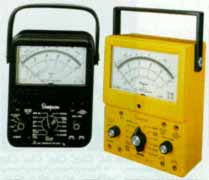wptski
Senior Member
- Location
- Warren, MI
Ideal doesn't list the input impedance for that particular tester. Some of their other testers just states "low". One of them states in their product descripton: Low impedance to eliminate ghost voltages but the listed impedance is 1M. I have a few current clamp meters that also have a 1M input impedance and that isn't low enough to eliminate ghost voltages.Click here for the official Square D spec sheet

Although I prefer to use Ideal's Vol-Con tester. Wiggy on steroids!!



